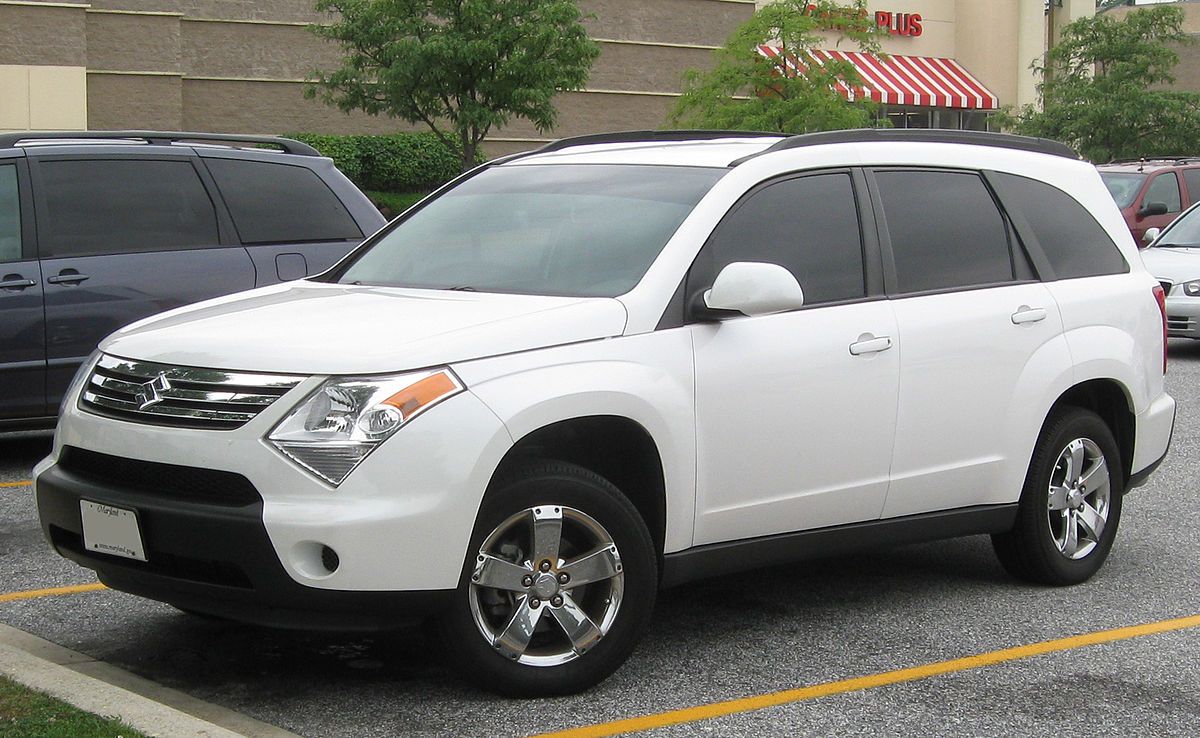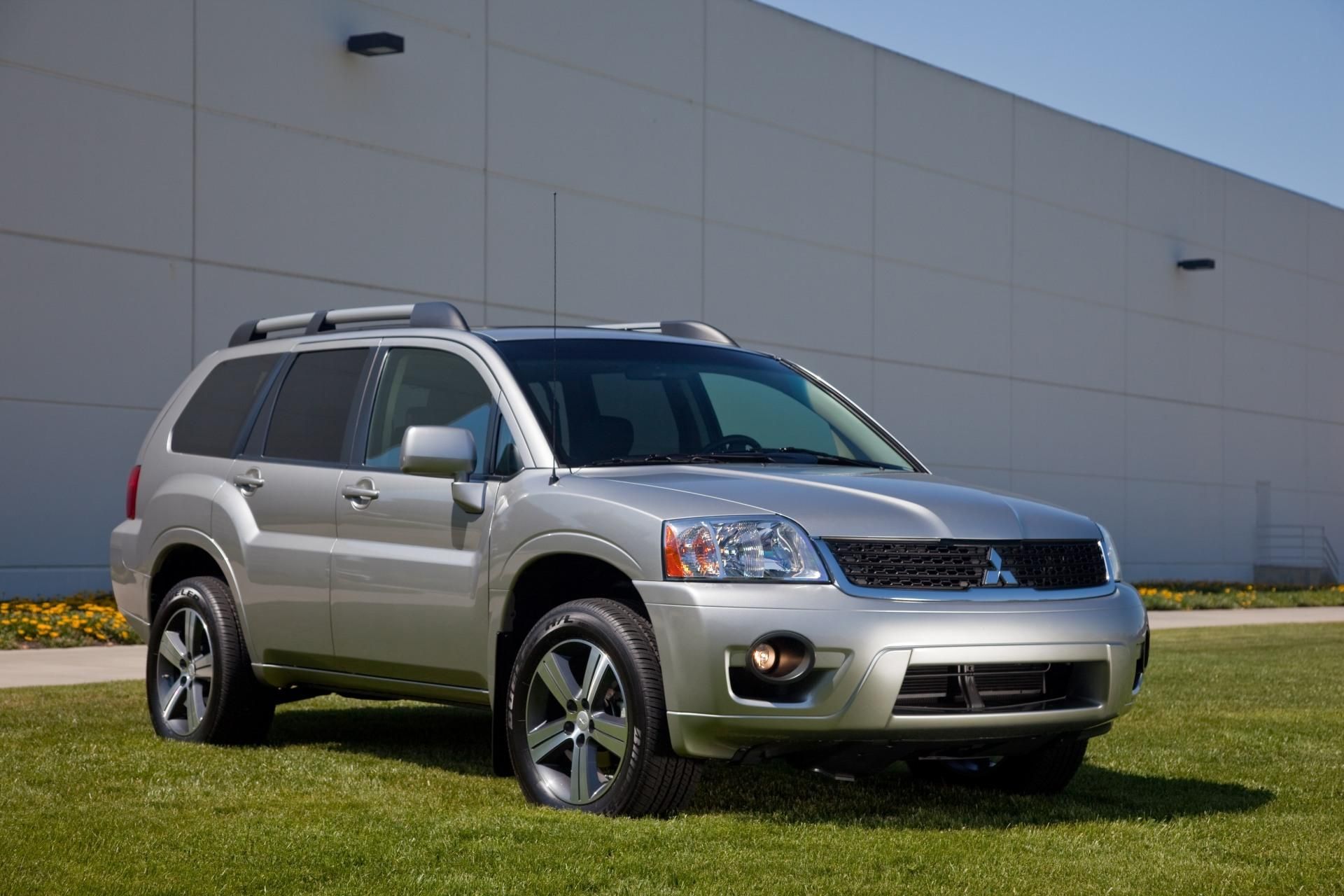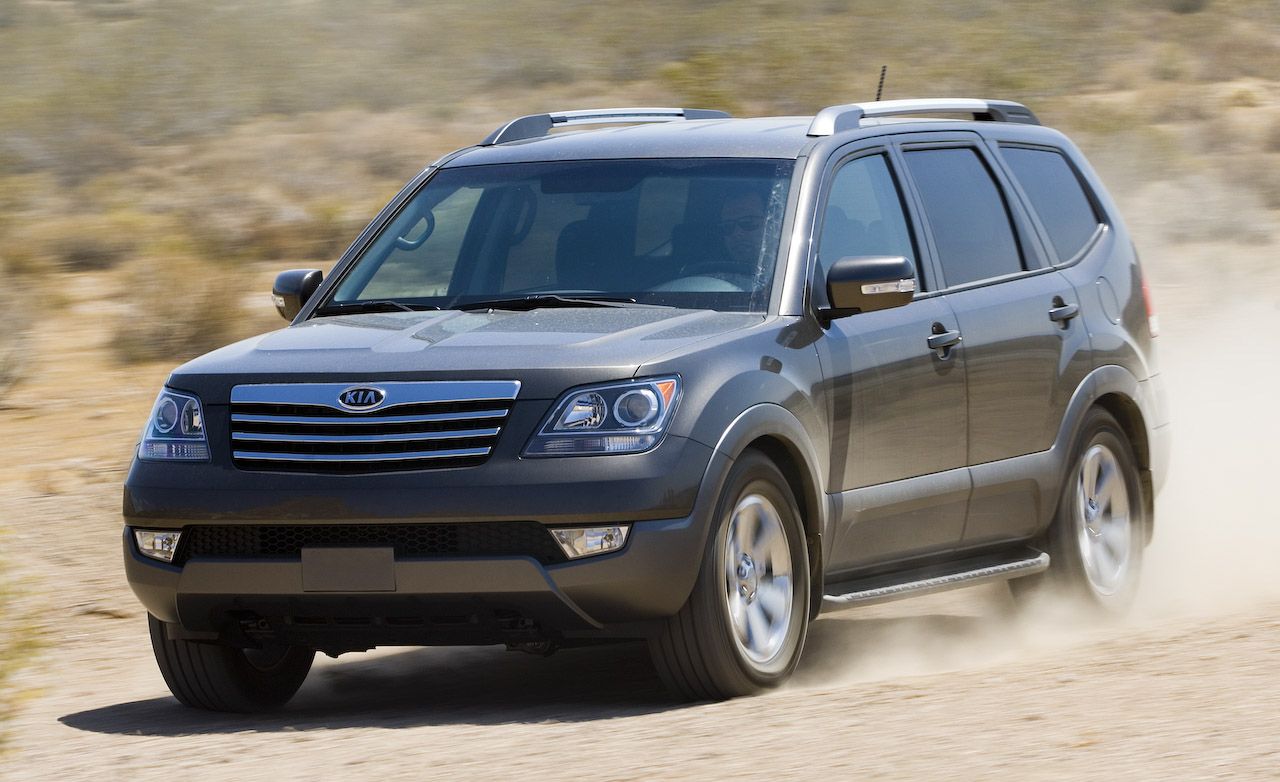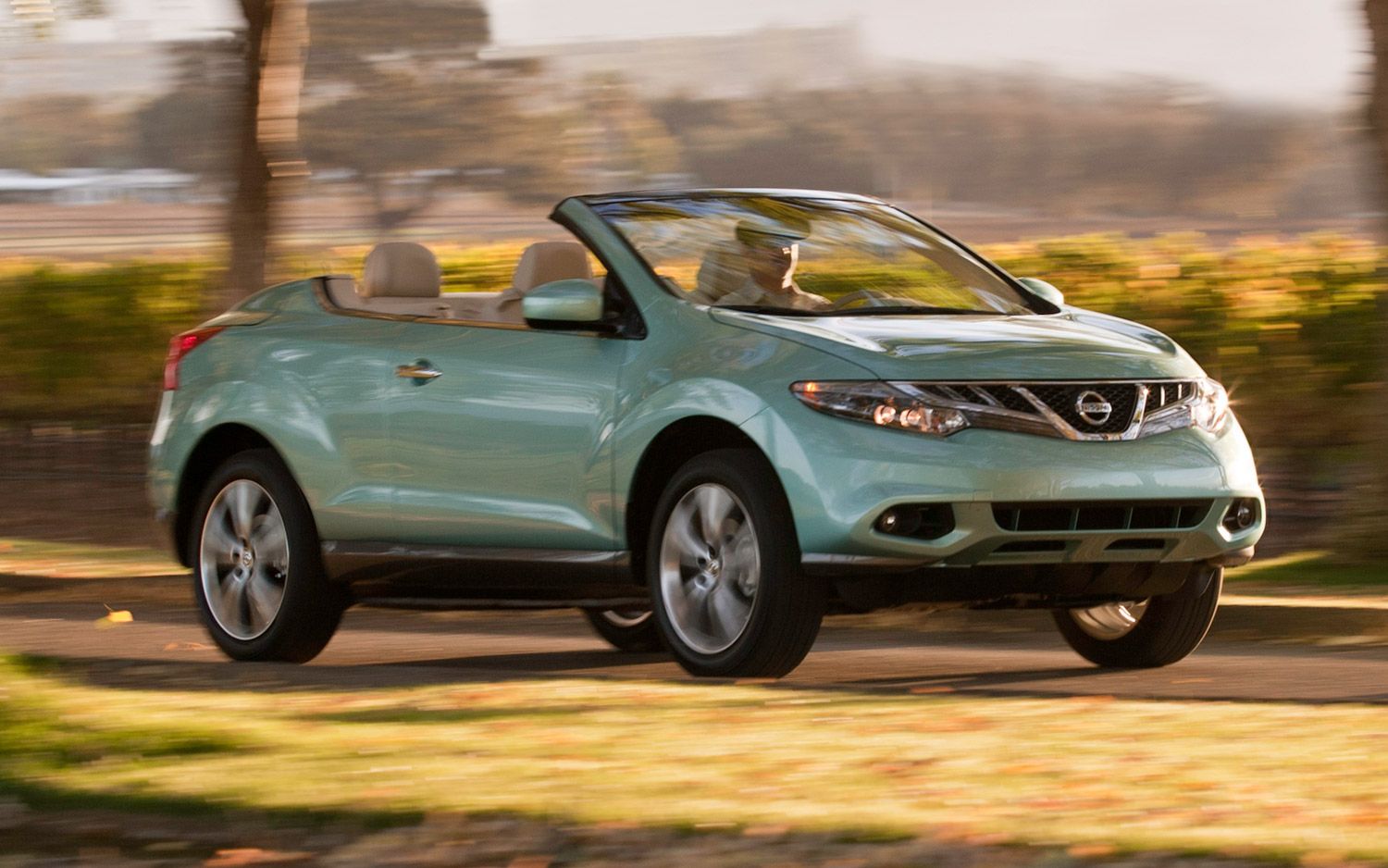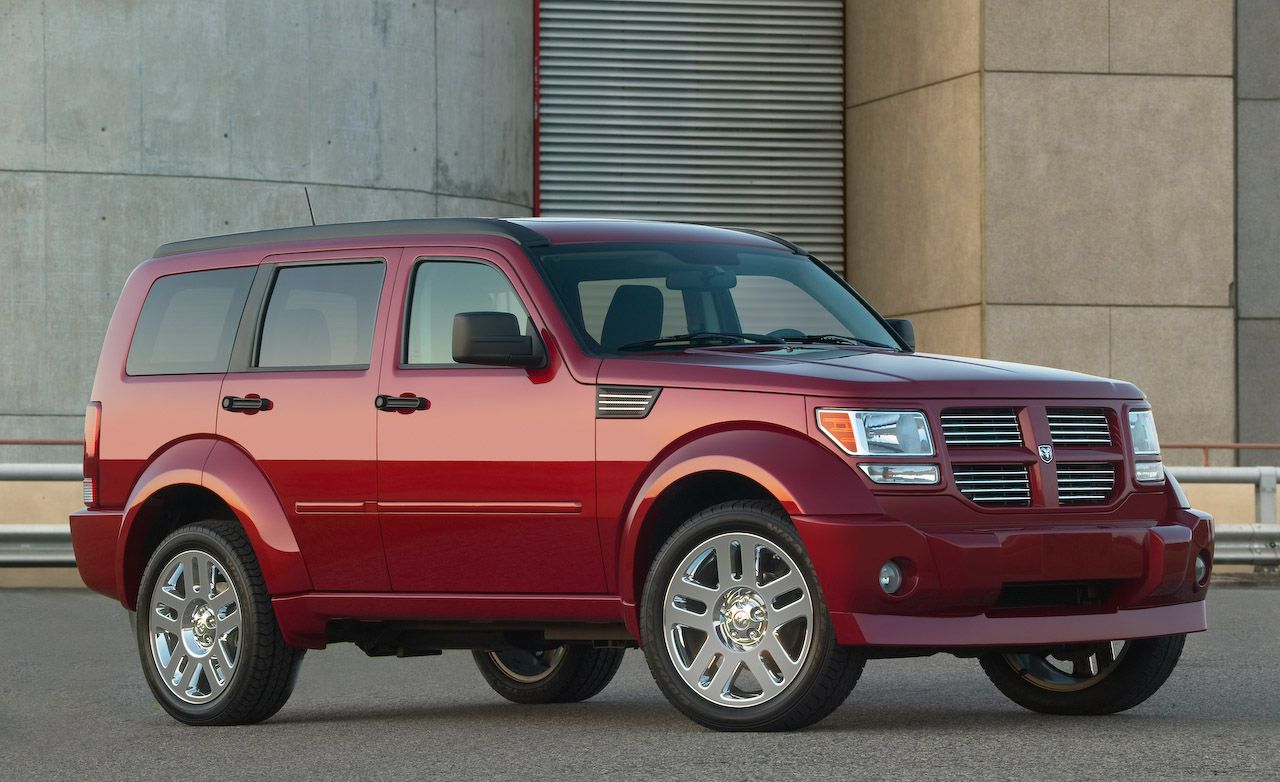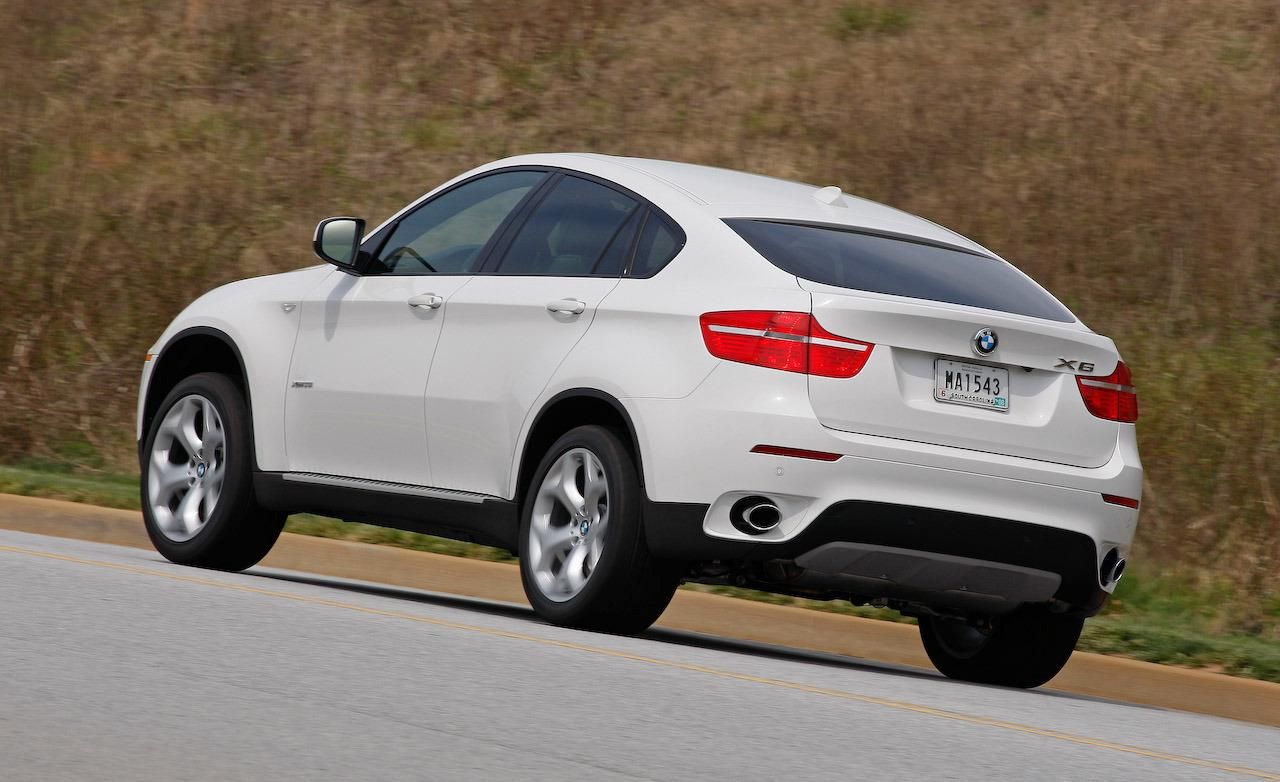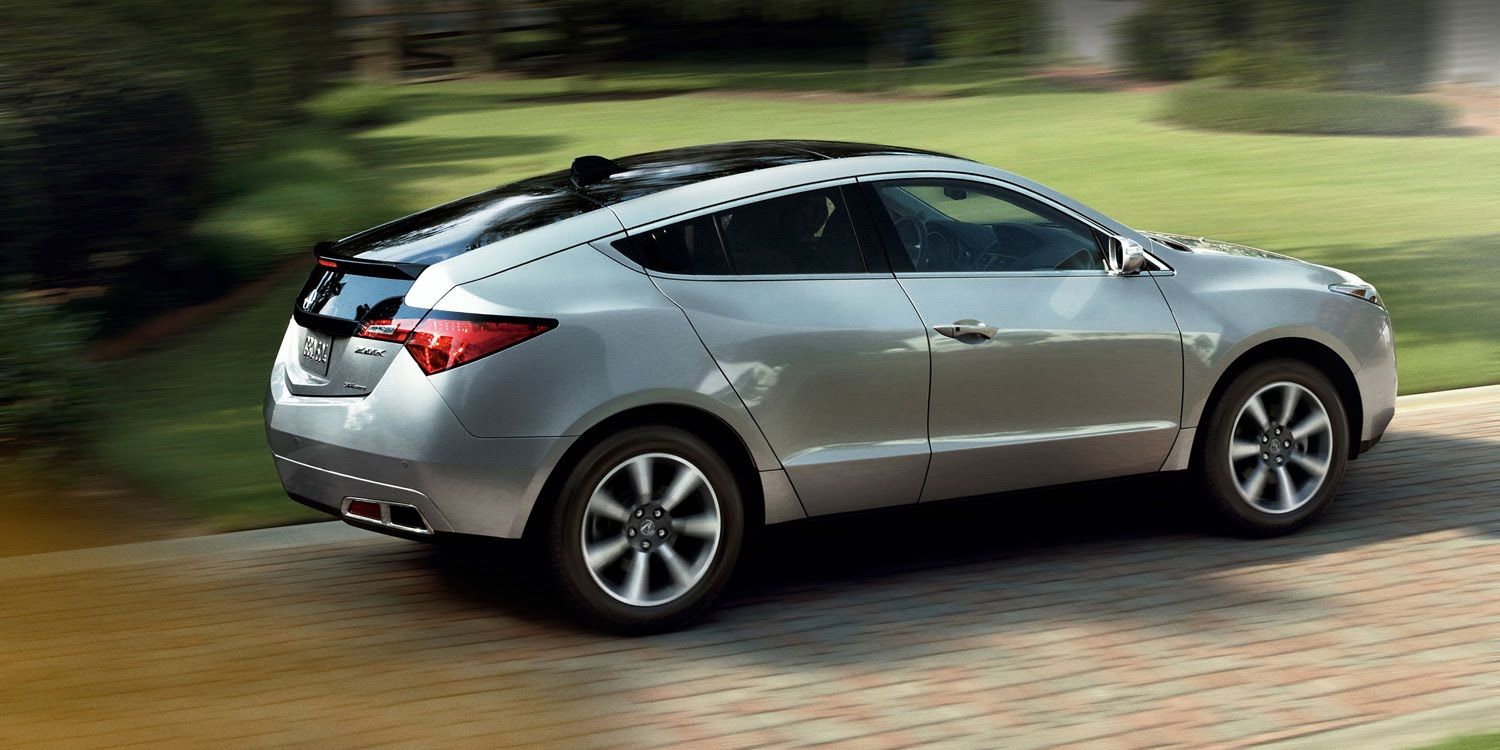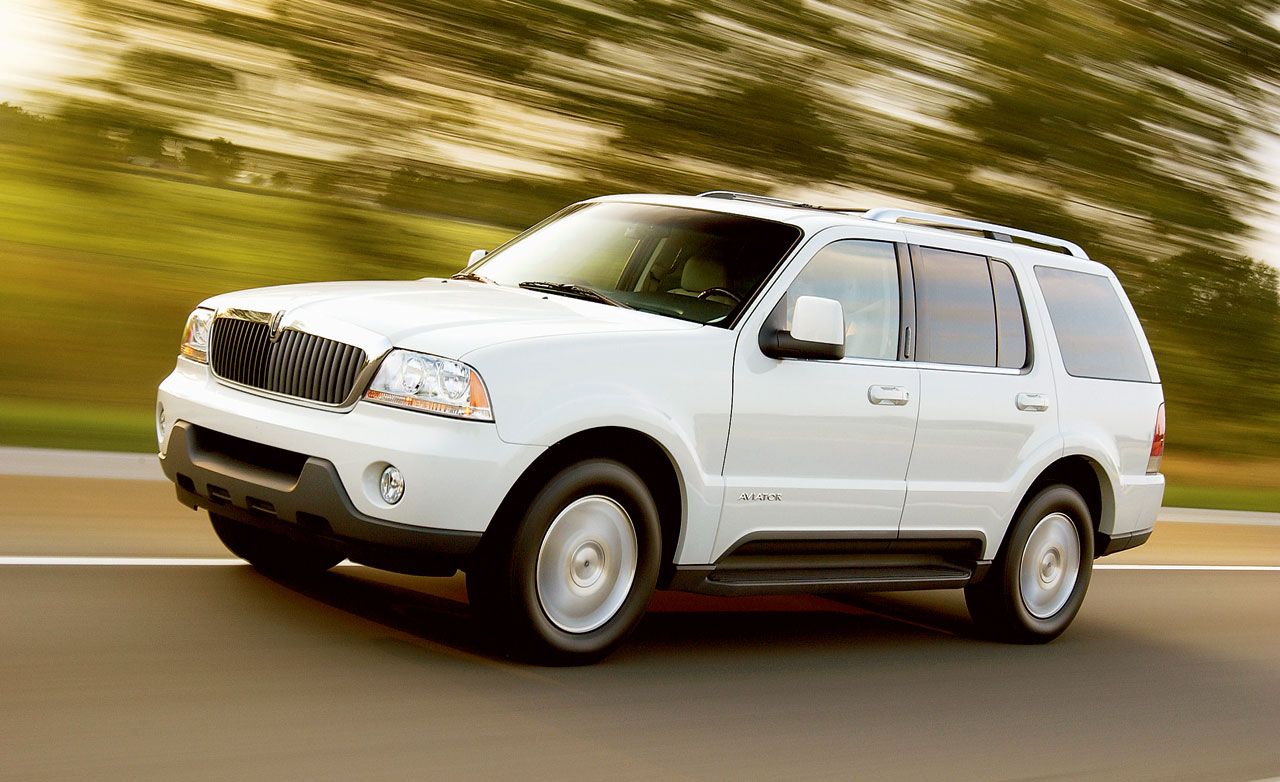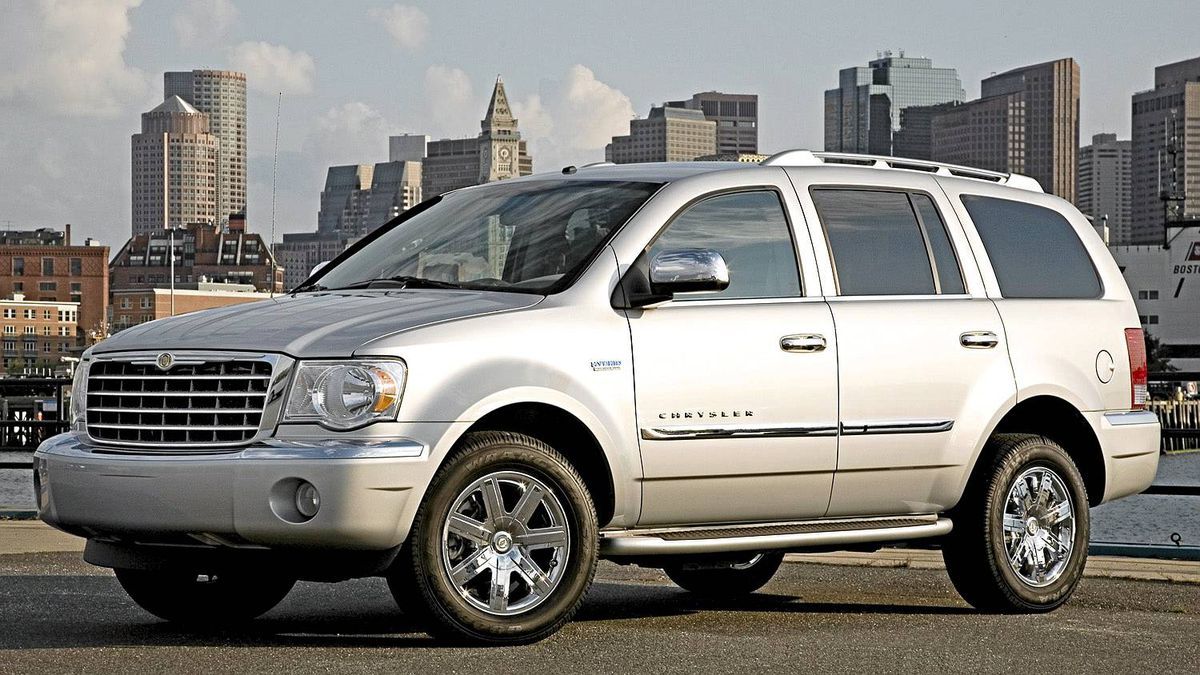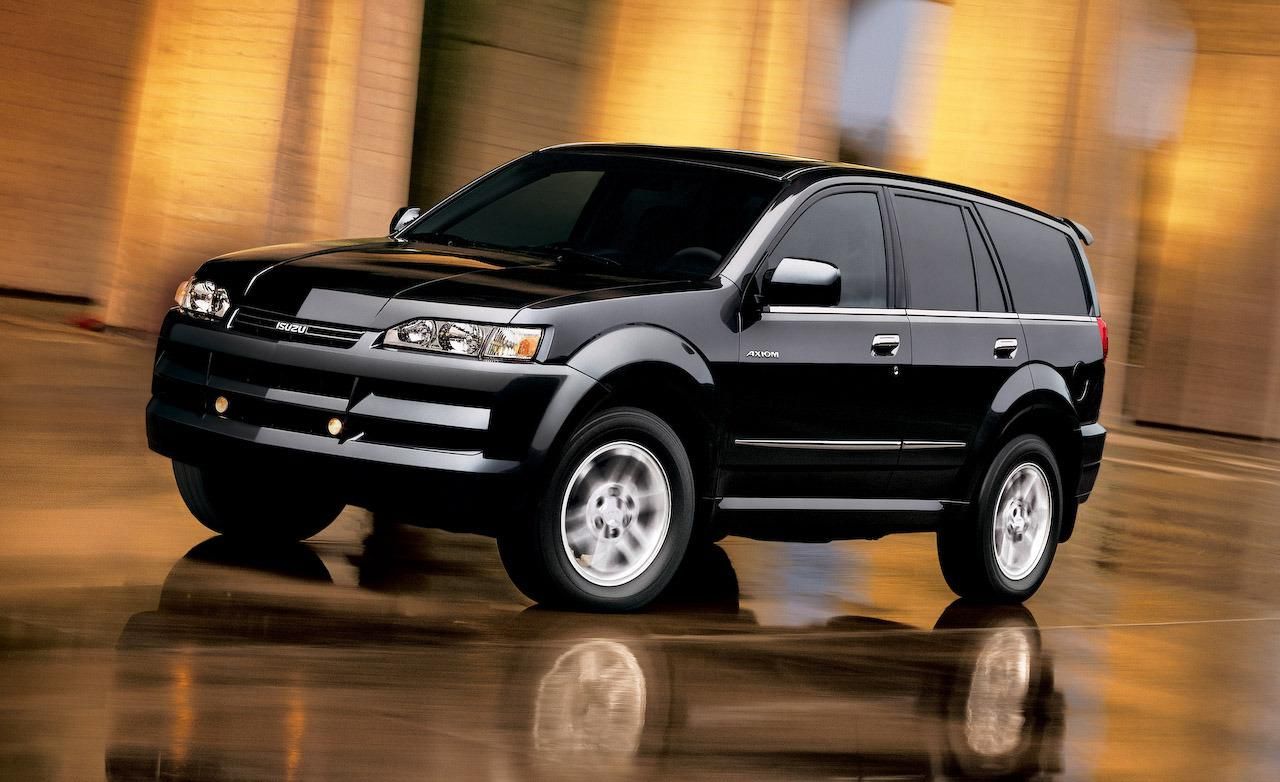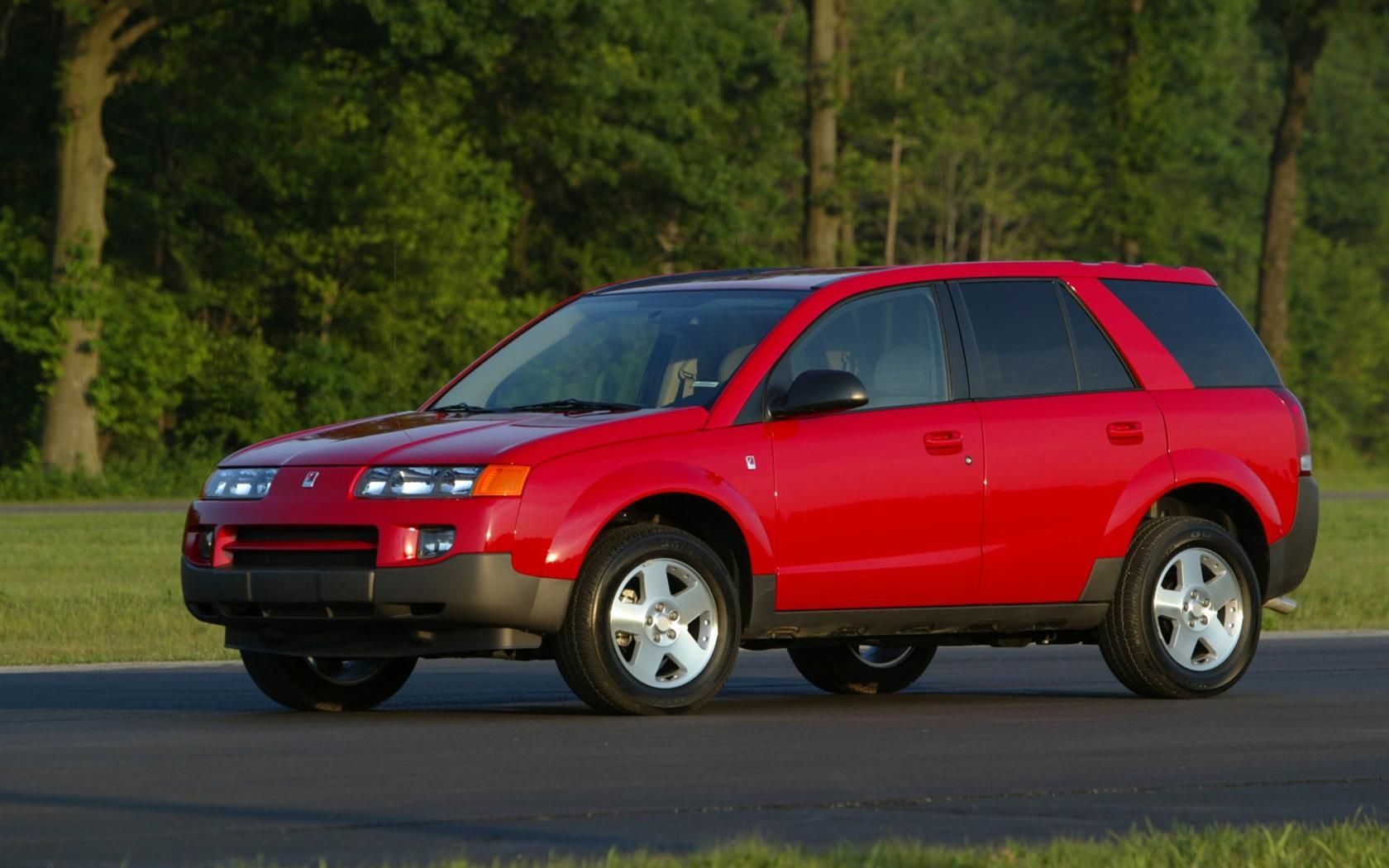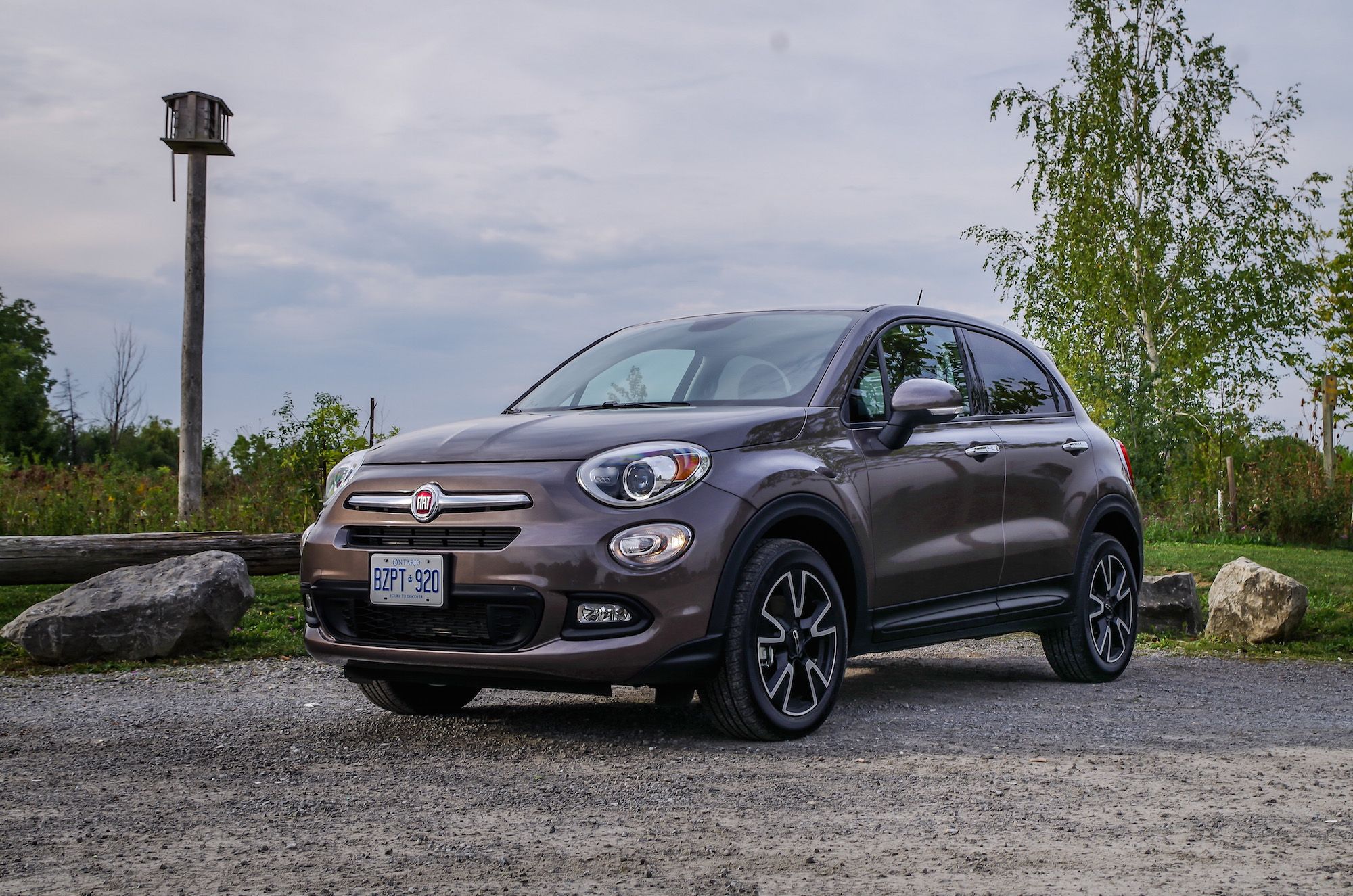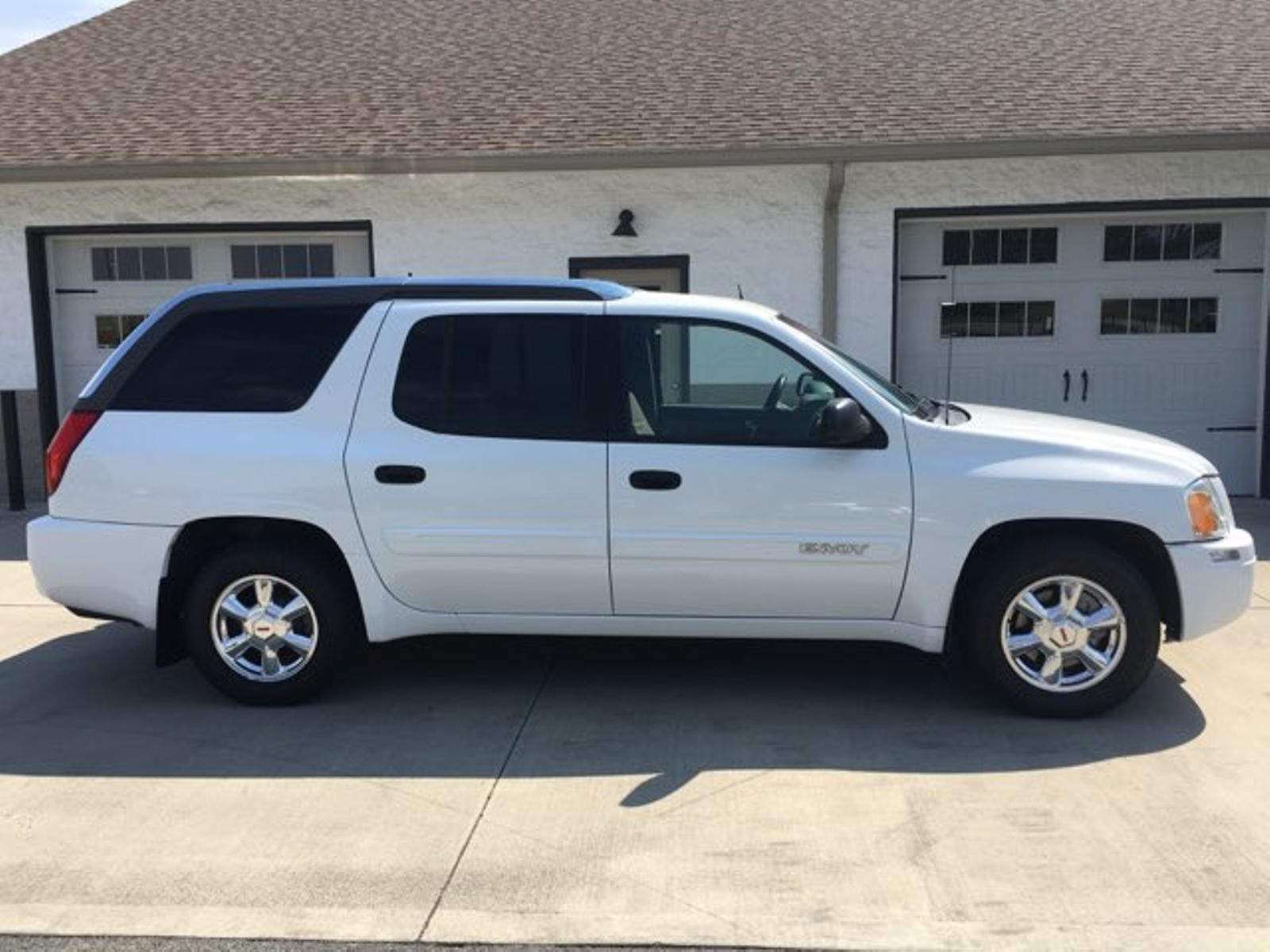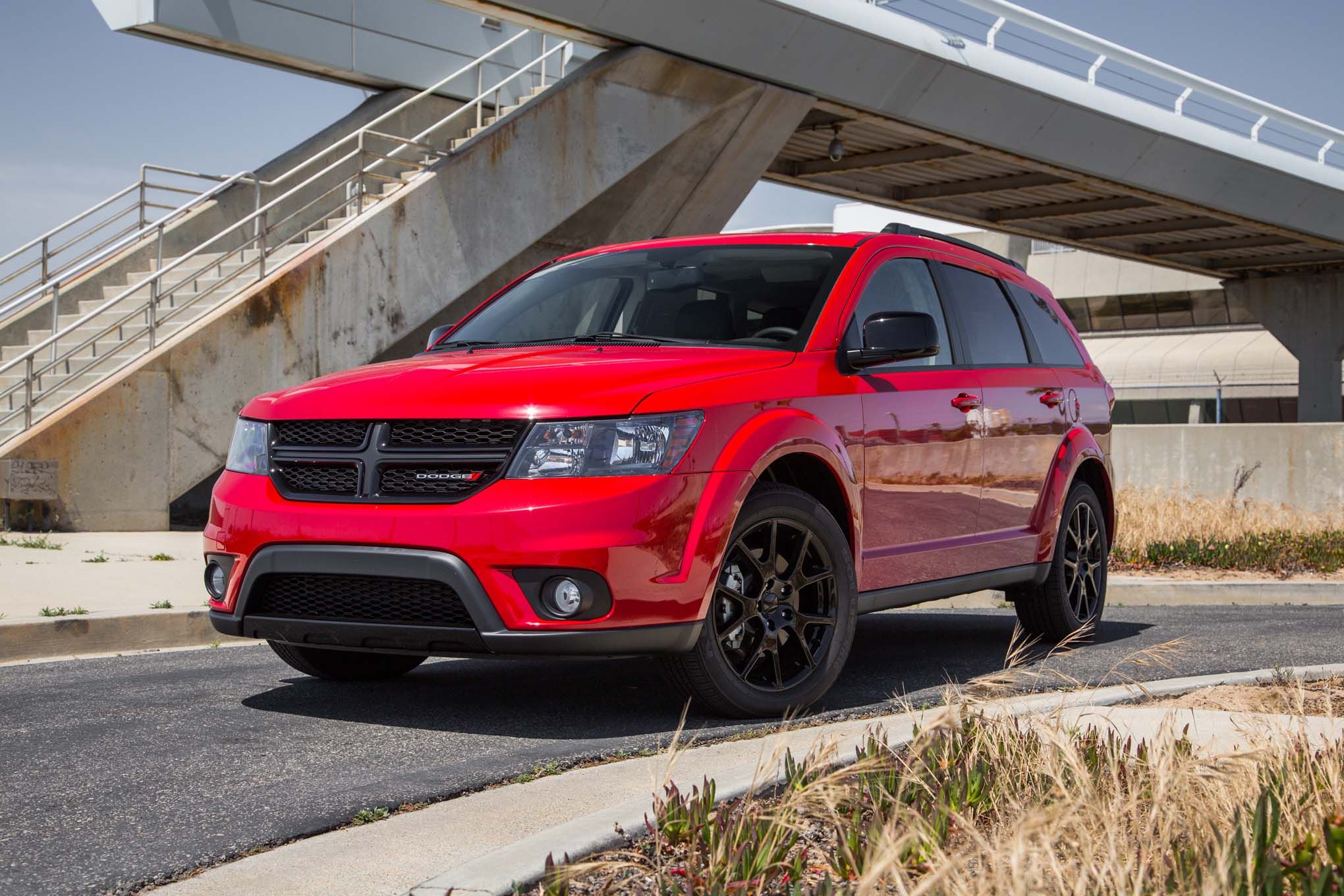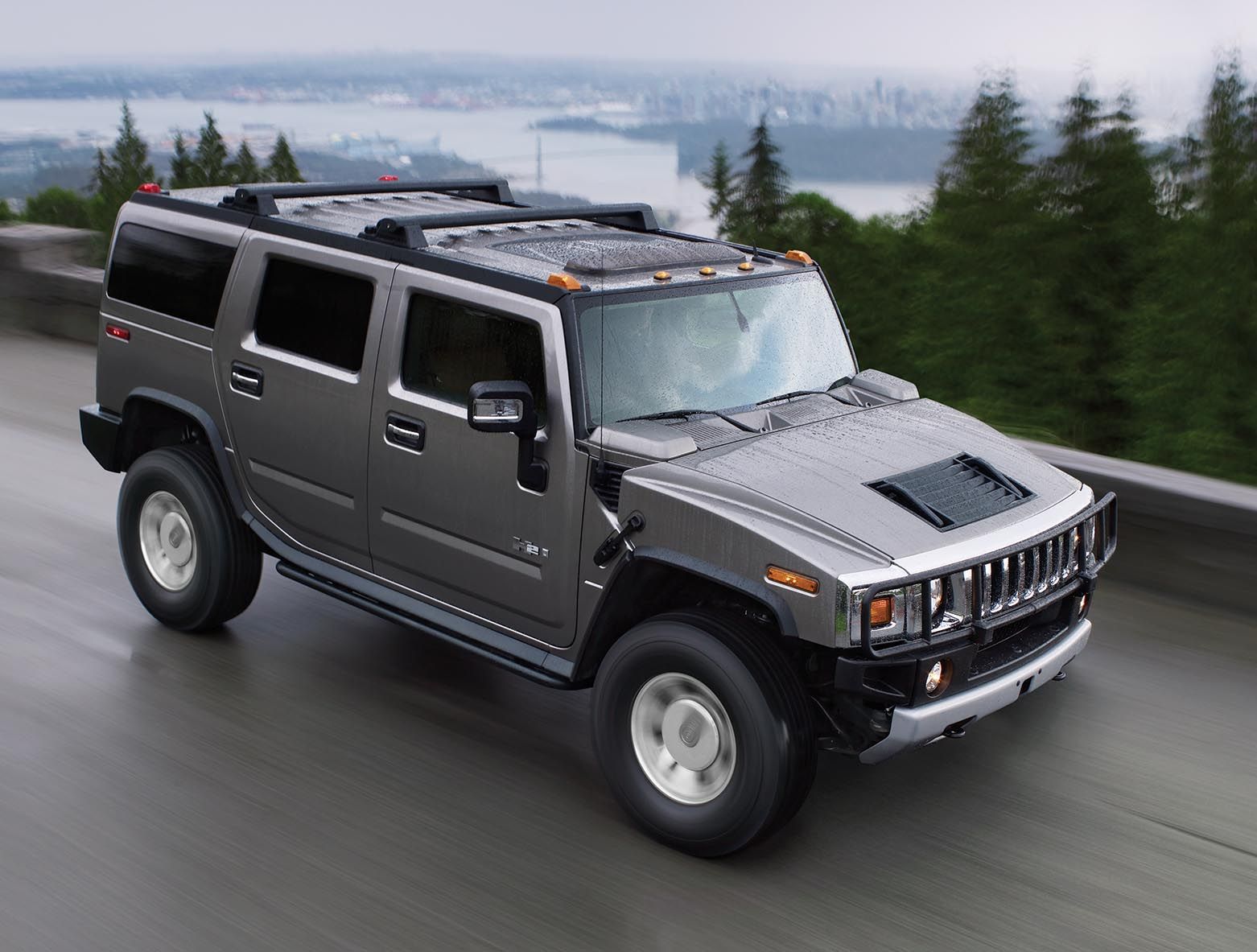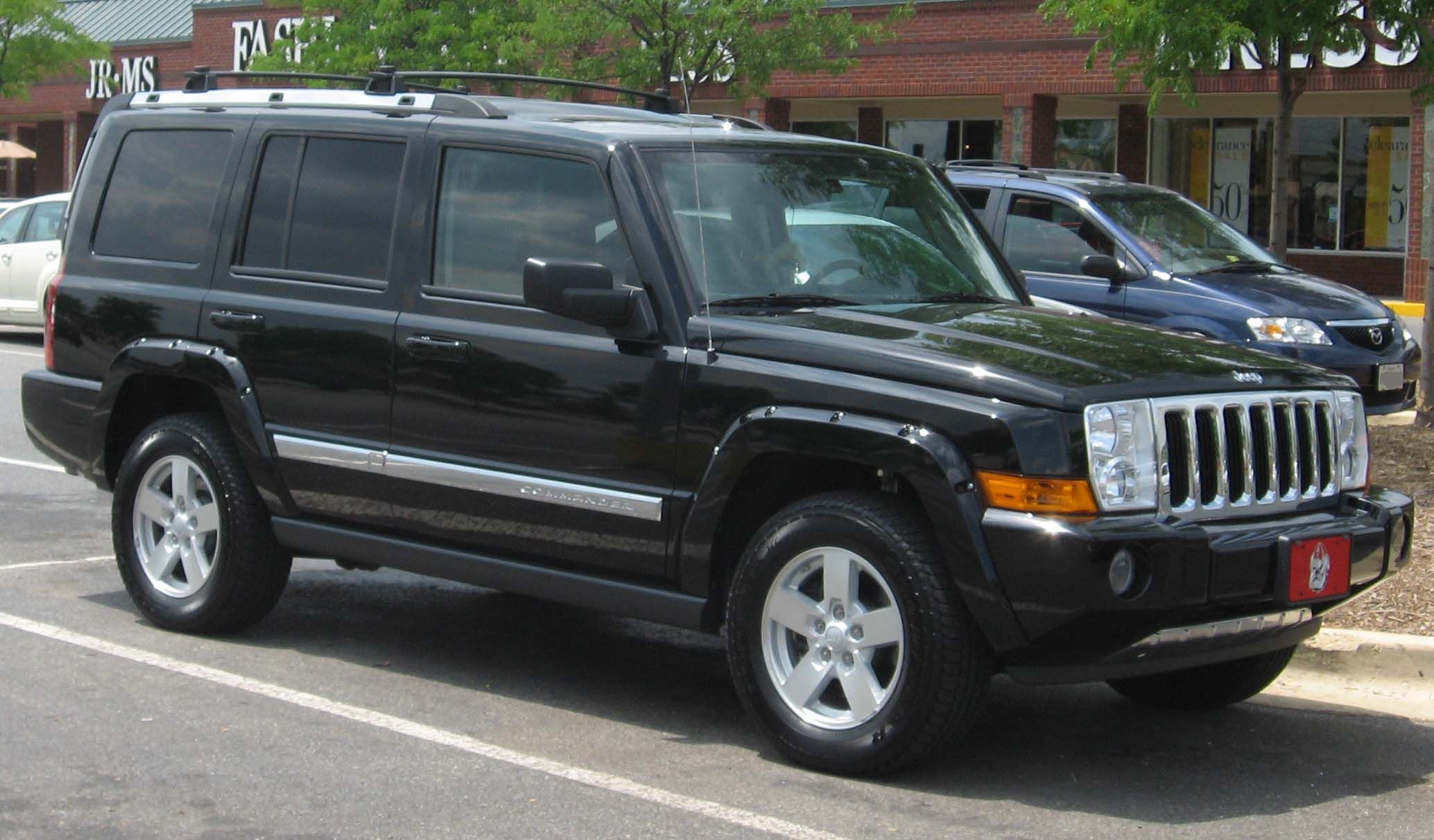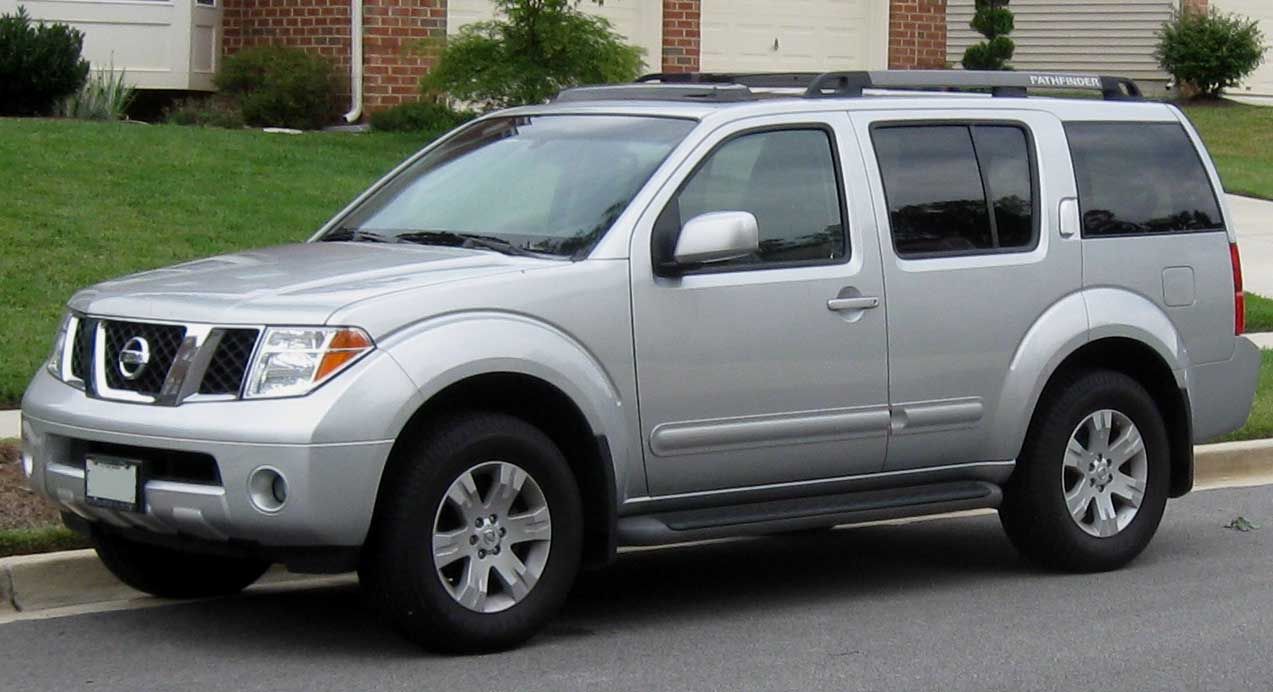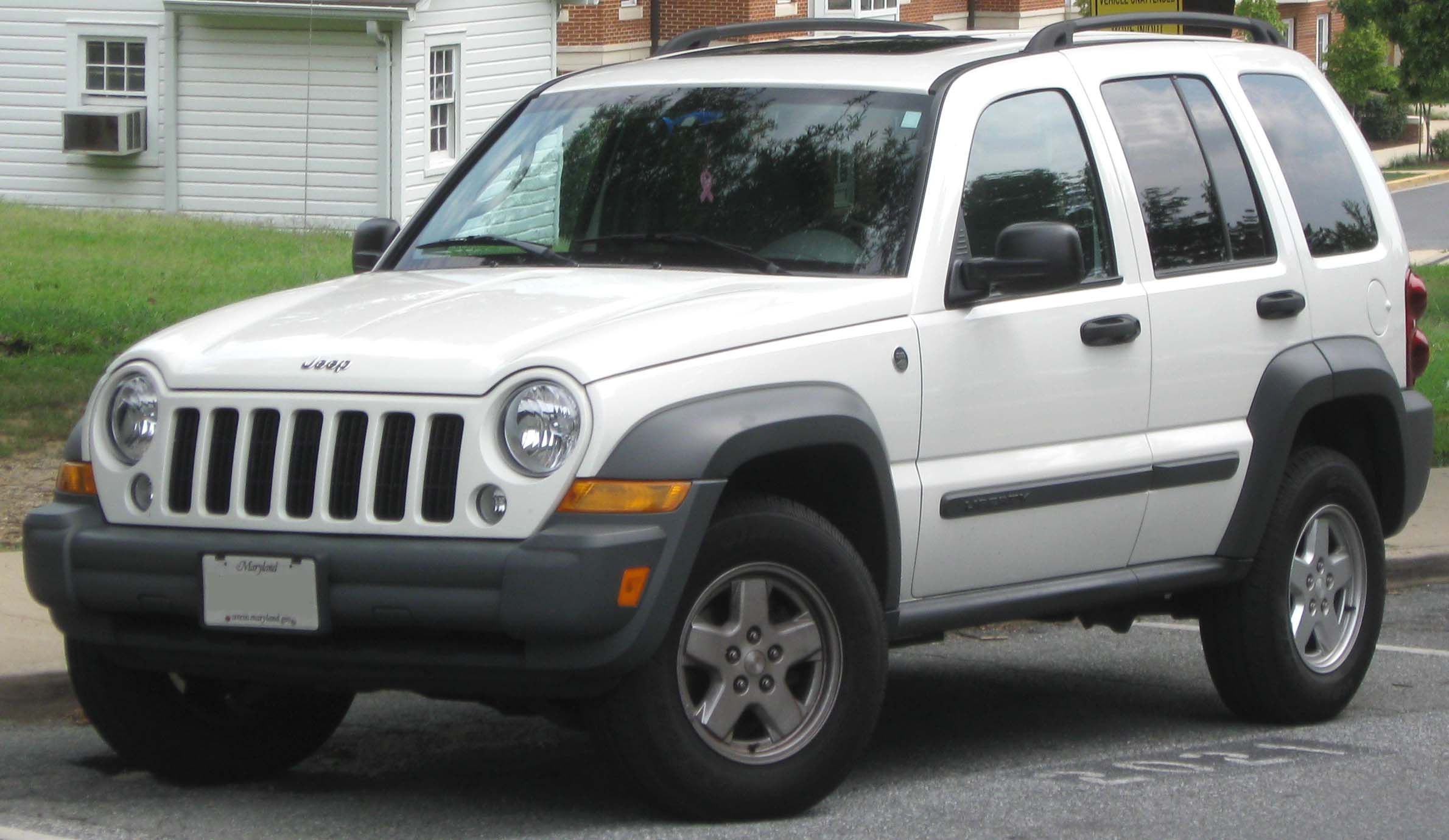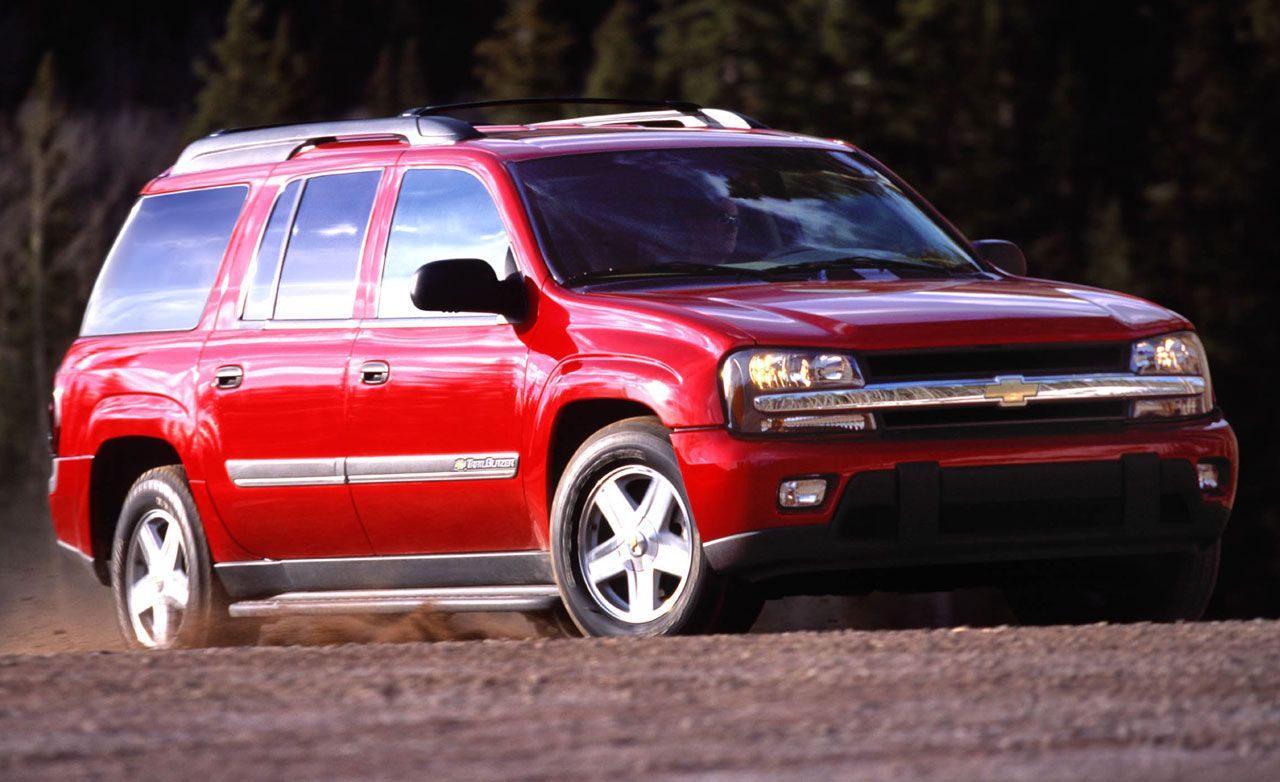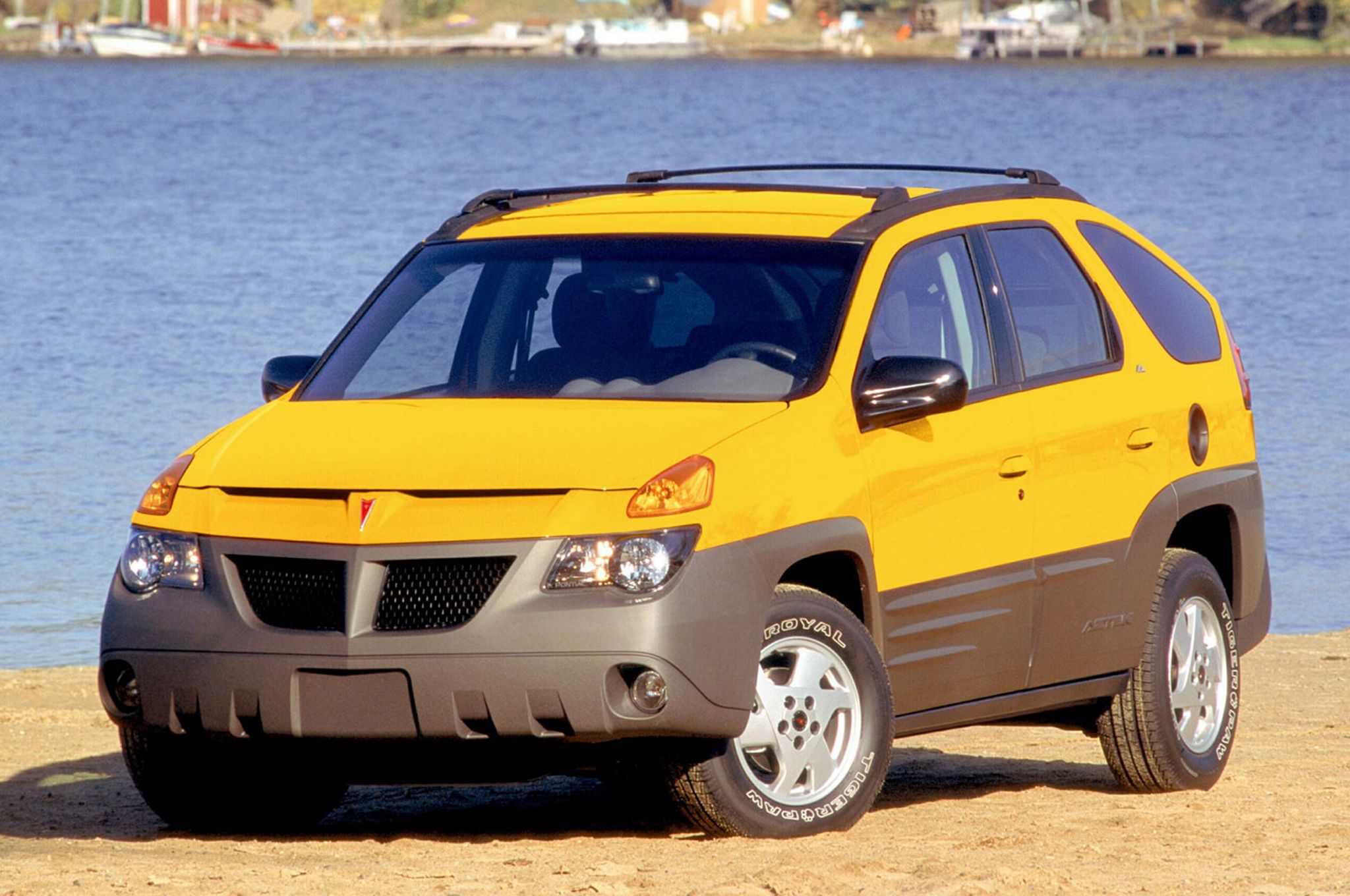There are few things on Earth that distill the essence of America as efficiently as the SUV. Our love of conspicuous consumption, our keeping-up-with-the-Joneses mentality, our desire to be above nature, ensconced in a leather-lined tower, high above the swirling muck below. That’s not to say that the US has a patent on the category: after all, plenty of European and Asian marques have had a stab at creating their own all-terrain runabouts with great success: rigs like the Land Rover Defender, Mercedes-Benz Geländewagen, and Toyota Land Cruiser are just as good, if not better than Uncle Sam’s finest when it comes to getting over the rough stuff.
Unfortunately, not all SUVs become overland legends. In fact, American consumers’ obsession with the category has resulted in a glut of trucks flooding the market from all four corners of the world, especially over the past 20 years or so, during which the SUV segment exploded in terms of popularity. With so many new nameplates having entered the scene, there was bound to be a couple of duds among them. Even America, home of the SUV, has put out more than its fair share of stinkers.
20 Suzuki XL7 (2007-2009)
If you’re an automaker that’s been given a Chevrolet Equinox and somehow made it worse, it’s high time you take a step back and reevaluate your status as an automaker: at that point, you no longer make cars, but motorized wheelbarrows. Maybe I’m being a little harsh on the poor Suzuki. After all, there was a surprising amount of grunt on tap: the XL7’s GM-designed 3.6 liter “high-feature” V6 thumped out 252 HP and 243 lb ft of torque, enough to shift this three-row, 4300 lb family hauler to 60 MPH in 7.6 seconds.
There was no shortage of toys either, as top-end models came loaded with features like a rear-seat DVD entertainment system, a remote starter, a navigation system, and a power sunroof, not to mention wood trim and some bovine-skin seats.
Finally, the big Suzuki could carry plenty of cargo: its second-row seats would fold flat, making for an enormous load bay. Unfortunately, that’s where the upsides end: Car and Driver declared that “the quality of the XL7's interior doesn't match up to the flexibility. The materials, some of which come from the GM parts bin, feel cheaper than the interior pieces found even in the lesser Grand Vitara, and fit and finish is sub-par.” They also lamented its near $40,000 sticker price when fully loaded, saying that, for the same amount of cash, there are “a lot of SUVs that are more luxurious, comfortable, and refined.”
19 Mitsubishi Endeavor (2004-2011)
If I asked you to draw an SUV right now, it's likely that you would end up with something like the Mitusbishi Endeavor. Look, I know its tricky to make a two-box silhouette look unique, but this was basically two refrigerators tipped onto their side with a grille slapped onto the lower half. In fairness, it was a smartly conservative move for Mitsubishi, a bit player in the US market: no one would be dropping tens of thousands of dollars on a peacock-plumed weirdo from a company with little in the way of SUV-building heritage (in America, at least).
It was basically an American car, designed in California and manufactured in a factory based in the ironically-named town of Normal, Illinois. Now, you'd be forgiven for thinking that a vehicle ostensibly designed to cope with the varied weather conditions of our proud nation would be, you know, somewhat adaptable. Unfortunately, this was not the case, as a Car and Driver instrumented test revealed that “[…] the Endeavor's snowy-road performance verged on treacherous.” They also criticized its worst-in-class cargo space, a downside compounded by the fact that the Endeavor was bigger than its fellow Japanese SUV rival, the Honda Pilot. In spite of Mitsubishi's attempts to woo the North American buyers, less than 35,000 units were sold in its first year, which looks astronomically high compared to the laughably tiny amount they were moving 5 years later: in 2008, only 6,000 of them left dealership lots.
18 Kia Borrego (2008-2010)
If there was ever the perfect example of being in the wrong place at the wrong time, it was the Kia Borrego. Let's take the time machine back ten years to the gloomy first days of the global recession. Car buyers were ditching their Hummers and Escalades and jumping into dinky little commuters as fast as their legs would carry them. You might think that Kia, with its huge range of compact sedans and hatches, would capitalize on this panic and release some sort of Prius competitor. Instead, they defied all common sense and dropped a full-size, body-on-frame truck that represented the antithesis of what basically everyone was looking for. The math only gets fuzzier when you realize that the Korean carmaker had almost nothing in terms of history in this domestic-dominated segment. I mean, as far as first efforts go, the Borrego wasn't all that bad.
It channeled Kia's value-friendly reputation by offering far more sheet metal and standard equipment than a Toyota 4Runner, and you could even get it with a 4.6 liter V8 from the Hyundai Genesis, kicking out just under 340 HP.
Unfortunately, you paid for those savings in terms of sophistication. Motor Trend noted that the “Ride quality also feels rough and trucky, and the Kia developed an odd groan in front and a squeak in back”. You'd also be feeling the hurt on your fuel bill: even in its most eco-friendly specification, with RWD and a 3.8 liter V6, you'd barely crack 19 MPG, in no small part due to its 4,400 lb curb weight. Buyers who went for the top line specification, with the Hyundai-sourced DOHC V8 and 4WD, could expect a combined average of 17 MPG.
17 Nissan Murano Crosscabriolet (2011 - 2014)
If the Pontiac Aztek was a hideous monster with a surprisingly practical heart of gold, the Nissan Murano Crosscabriolet was a remorseless serial killer. Nissan, with it’s continued reluctance to release either a 370Z successor or any details concerning the next generation GT-R, killed any of its waning credibility with enthusiasts when it released this thing to the public at the 2010 LA Auto Show.
They billed it as being the “world’s first all-wheel drive crossover convertible," a string of words that, when put together, make the world a much scarier place: we live in a post-AWDCC-world, may God save our souls. It’s hard to know what the exact cross-section of buyers that the Crosscabriolet was targeting, especially with it’s laughable $48,000 asking price. Hollywood dentists? Malibu real estate agents? Beverly Hills gynecologists? Honestly, I struggle to visualize someone carefully choosing exactly which shade of beige they want for the seats in their motorized baleen whale, perfectly content with spending the equivalent of a nicely specced Audi A6. Doug DeMuro, a far more well-spoken man than I, summarized the Crosscabriolet very eloquently: “one large, multi-national corporation’s struggle to lose money in a world filled with profit and opportunity.”
16 Dodge Nitro (2007 - 2012)
Really, I’m not sure what else needs to be said about this heap. It’s very difficult to adequately capture the coma-inducing mediocrity of this two-row, body-on-frame SUV, but that won’t stop me from trying. Interesting styling aside, there’s very little to make this thing stand out, and a whole lot that simply made it flat-out bad. I suppose I should defer to an expert opinion first, lest you think I’m exaggerating.
William C. Montgomery of thetruthaboutcars.com was merciless in his criticism of the Nitro, the interior being a particularly low point: “Low-grade brittle plastic adorns every button while a mishmash of textures suffuses interior surfaces. The Nitro’s interior says “rental car” almost as clearly as the exterior of the Ford Taurus.” Montgomery also dinged it for its clumsy on-road manners, lamenting its “numb steering” and “boat-like dynamics.” You might think those traits to be a worthy compromise for all-terrain capability, a fair guess considering its optional four-wheel-drive system and Jeep Liberty-based platform. Unfortunately, it was absolutely useless off-road as well, in no small part thanks to its relatively low ride weight, ground-hugging front fascia, and oversized 20-inch chrome wheels.
15 BMW X6 (2009 - )
This is the vehicle that started our current obsession with hunchbacked automotive Frankensteins, which is probably enough to earn it a spot on this list without even mentioning its (lack of) merits. Look, I know it’s very hipster and very chic to hate on the X6. After all, you might point out, it’s not actually that bad of a vehicle: it gets the company’s stellar line of inline-six and V8 engines along with a luxuriously-appointed interior and the company’s typically German approach to build quality (that might not be considered a good thing depending on who you ask). However, all of those upsides are negated by the fact that BMW pompously labeled the X6 as a "Sports Activity Coupé (SAC)." Words fail me.
Besides, the X6 had none of the advantages that SUVs are supposed to have.
First was its total lack of off-roading ability: no low-range gearbox mode, no adjustable ride height, and no locking differentials. All this meant that the X6 would struggle to climb a slightly muddy hill. There was also the lack of interior space: the sloping rear end meant that both the car’s rear-seat headroom and cargo capacity were severely diminished.
14 Acura ZDX (2010-2013)
There's something oddly endearing about the Acura ZDX, which is odd considering just how much I despise the similarly-shaped BMW X6. Maybe it's the fact that Acura didn't try to challenge the boundaries of physics and good taste with some overpowered V8 version, or maybe its the fact that they didn't have the arrogance to ask for damn-near $100,000 for the privilege of M1 Abrams-like visibility. Who knows, I might just have an anti-German bias.
No, what really earns the ZDX in this spot on this list is the fact that literally no one bought it, thus ensuring the act that no one should be seen driving them. The numbers are, in a word, hysterical.
5,600 units over the course of three years. For reference, Porsche, hardly a volume player in the global car market, managed to move almost six times as many cars in 2010 alone. That's why I think that the ZDX is going to become a modern-day classic in the years to come, a relic of a time when we chopped up perfectly good crossovers in the name of, um, style? Look, I understand your skepticism: it gives up three whole seats and a bunch of headroom to the Acura MDX on which it's based, tows less than a much smaller and less powerful Honda CR-V, and has an exterior design best described as, ahem, quirky. It wasn't without upsides either, as it had a cockpit crammed to the gills with bleeding-edge tech, an advanced AWD system, refined driving manners, and, in the words of Car and Driver’s Eddie Alterman “leather that feels like it slid off a side of Wagyu beef.”
13 Lincoln Aviator (2003-2005)
The fourth-generation Lincoln Navigator has been a startling success for America’s once-great house of automotive luxury. It turns out that the combination of a stylish aluminum body, yachting-inspired interior, gutsy turbocharged power plant, and surreal advertisements featuring Matthew McConaughey talking to himself is in fact a winning one, as Lincoln was unprepared for consumer demand: sales doubled from January 2017 to January 2018, or from 652 to 1,288 units in terms of actual numbers. That doesn’t sound like a lot, but for a full-size behemoth that retails for damn near $100,000, it’s none too shabby.
That success is a testament to how far Lincoln has come in recent years: a mere decade ago, they were still cranking out dreck like the Aviator. To summarize, the Aviator was Ford’s cynical attempt at entering the premium SUV arena by stuffing a plebeian Ford Explorer with walnut and leather and then expecting consumers to pay a whisker under (the inflation-adjusted equivalent) $63,000 for the privilege. For reference, that was more than $10,000 dearer than the Acura MDX with which it competed. Interior space was pretty dismal, despite the Aviator being roughly the same size as the USS George H.W. Bush: Car and Driver took issue with its “tight, cocoonlike driving compartment.”
12 Chrysler Aspen (2007 - 2009)
When Chrysler called their range-topping SUV the "Aspen," I think that they wanted buyers to visualize scenic snow-capped mountains, replete with twisting mountain passes lined with pine trees covered in thick green nettles, the whole picturesque scene backlit with a sunny golden hue. The name might have suited an upscale luxury sedan, the sort of car America used to be so good at building. Unfortunately, the whiff of redneck was just a little too strong here.
Based on the Dodge Durango, the Aspen eschewed that truck's unpretentious macho-man image and made a half-hearted attempt at going after the Cadillac Escalade. I know the big Caddy isn't perfect, but Chrysler's effort at going after the premium SUV crown was pretty crummy when you realize that they got the basic ingredients wrong: the interior was awash with pallid gray leather and blindingly shiny wood veneer, while the driving experience wasn't sufficiently different to a car nearly half its price. Even Chrysler themselves seemed fairly unhappy with the way things turned out, shutting down Aspen production after just two years on the market. On the other hand, if you’re on the hunt for a potential future classic, keep an eye out in the classifieds for an Aspen Hybrid, an "eco-friendly" SUV that netted fractional economy gains over the non-hybrid model, in no small part thanks to a near three-ton curb weight: only 800 were made before the project was shut down.
11 Isuzu Axiom (2002–2004)
Another nameplate that I assume few will remember, the futuristic-looking Axiom is one of the only SUVs on this list that’s been immortalized by the power of film: it starred as Antonia Banderas’ personal vehicle in the first Spy Kids movie. Unfortunately, the Jetsons-like styling was one of the few things the Axiom had gong for it, as it cloaked a mechanical package that was decidedly agricultural in nature. It was based on the same chassis as the second-generation Isuzu Rodeo, an unpretentious ladder-frame workhorse that was always more at home on the farm than parked at the local country club.
The Axiom also used that truck’s 3.5 liter 6VE1 V6 engine, a naturally aspirated unit that mustered 250 HP in its peak state of tune, along with the company’s so-called “Torque on demand” four-wheel drive system.
While these ingredients are fine plodding through a muddy field while carrying a bunch of sharp-edged farming implements, they’re less well-suited to the morning school run, a task that Isuzu insisted that the Axiom was built for. Consumers weren’t fooled, a fact reflected by this SUV’s dismal sales figures: just over 23,000 units were sold over the course of its production run. For reference, the Toyota moved over 120,000 Highlander in 2002 alone.
10 Saturn VUE (2002 - 2010)
Crossovers are all the rage right now, and had Saturn managed to survive long enough to reveal a modernized Vue with quirky styling (perhaps based on the same D2XX platform as the new GMC Terrain and Chevrolet Traverse), I think that the company would be doing pretty well right now. Of course, that’s entirely hypothetical, and I’m not about to say that it was a vehicle too far ahead of its time, because, in all honesty, it was a pretty mediocre product. And don’t accuse me of anti-American bias when say that the best thing about the Vue was its optional engine, a Honda-built 3.5 liter V6, because other, far more qualified people found it to be an exceptionally flavorful ingredient in an otherwise tasteless plate of mush. People like Car and Driver’s Aaron Robinson for instance: “Flat-foot the pedal, and the Vue squats on its buns and lunges like a stink bug in heat. On the freeway, it zooms by tractor-trailers as if they were rolling on square wheels.” Unfortunately, this Saturn didn’t somehow inherit Honda’s reputation for stellar reliability: the first-generation Vue was infamous for its fragile VTi continuously variable transmission, which resulted in a class-action lawsuit being filed against GM.
9 Fiat 500X (2014 - )
Everything that I like about Fiat-Chrysler could be reduced to their Hemi V8, and to hell with everything else. Plop a medical-grade chunk of supercharged Americana in the engine bay, and people will forget about the company’s dismal reputation for quality control (JD Power ranked Chrysler last in terms of reliability among 25 other brands for their 2018 carmaker survey).
That being said, I’m not sure if even a 707 HP shot of adrenaline could save the Fiat 500X. Competing in the unfortunately thriving compact crossover segment, the 500X does little to make itself a more tantalizing prospect than its competitors.
It is mechanically related to the Jeep Renegade, the main differentiator between the two being the Fiat’s bloated exterior, which resembles a 500 stuffed to the gills with silicone. Questionable styling aside, there’s plenty more of substance to deride. Consumer Reports lamented its “stiff ride, noisy cabin, restricted visibility, annoying vibration when idling, and unsupportive seats.” At the very least, you might think that a compact crossover would have decent fuel economy, but you’d be mistaken: the publication recorded a combined fuel economy average of 23 MPG, which they deemed to be “unimpressive for a vehicle this size”.
8 GMC Envoy XUV (2004 - 2005)
It’s hard to be considered as ungainly as the Pontiac Aztek, but the GMC Envoy gave it a fair shot. No, it didn’t have that car’s fantastically bizarre body surfacing or botched plastic surgery nose, but it tried to make up the deficit with one of the strangest proportions I’ve ever seen, with a strangely elongated wheelbase and lumpy greenhouse. The XUV was the result of a promising sales pitch: combine the passenger-ferrying capability of an SUV with the durable loading bay of a pickup truck. The XUV’s bloated rear end was intended for this purpose: it hid a retractable roof mechanism that added nearly 200 lbs to the Envoy’s already corpulent curb weight. That mechanism was a manufacturing nightmare: it was difficult to implement and expensive, leaked huge amounts of water, frequently suffered sensor malfunctions. Even with an available 5.3 liter V8 with 290 HP, this truck's performance was closer to agricultural equipment rather than other SUVs.
Bob Lutz, GM’s outspoken former Vice Chairman, tried to kill the project in its early phases back when he was head of product development, but both he and other higher-ups were persuaded by yearly sales forecasts of over 90,000 units. Fortunately (or unfortunately, if you were seriously invested in the well-being of the XUV project), a mere 13,000 XUVs left dealership lots. The project was canceled after just a year.
7 Dodge Journey (2009 - )
There isn’t much to say about the Dodge Journey, in much the same way that there isn’t much to say about a plain bowl of oatmeal: they both exist, and, uh, that’s it. The Journey wasn’t the embattled American carmaker’s first foray into the hellish depths of midsize the crossover realm: the equally lamentable Daimler-era Chrysler Pacifica came first, though the Journey gets the kicking because it’s still around. That’s pretty impressive considering this heap entered production almost a decade ago.
There just isn’t much here to recommend it over its rivals: I know stoplight drag racing is (presumably) low among priorities for consumer-grade crossover buyers, but the lack of engineering rigor is one full display here when you realize that the bigger, heavier Honda Pilot, with a similarly powerful V6 engine, can scoot to 60 MPH over 1.5 seconds faster than a top-range Journey. Not convinced? Ride quality, an important metric for any would-be family vehicle, is another weak point. Motor Trend’s Kelly Pleskot criticized its lack of sophistication: “[traveling] over potholes and other road imperfections will quickly unsettle the driver and passengers. The rear suspension shudders consistently at moderate speeds even on pavement that looks reasonably smooth.”
6 Hummer H2 (2003 - 2009)
Is there a more stereotypical American SUV, a more symbolic symbol of conspicuous overconsumption? No, what made the H2 stand out was its peerless ability to effectively communicate the “f**k you, I got mine” ethos and then put it in reach for large swaths of the American car-buying public. Alright fine, for an inflation-adjusted retail price of just over $70,000, maybe it wasn’t that attainable. "What about its practical, go anywhere nature?" you cry. Oh sure, it was fairly capable off-road, what with those stubby front and rear overhangs, locking differentials, and knobby, oversized tires, but it was a mere pretender compared to the military-derived might of the (much larger, even less practical) Hummer H1. That beast shares a direct family lineage with vehicles meant to be dropped out of helicopters and driven through a hail of gunfire. The H2?
Its chassis is a mishmash of heavy-duty GM pickup trucks. You might think it would have something in the way of at least tolerable road manners, but no: the H2’s three-ton curb weight meant that even with a 6.0 liter small block on the hood, it would groan to 60 in just under 11 seconds, all the while having the handling characteristics of a nuclear submarine. Build quality was abysmal, with Jalopnik’s William Clavey summarizing his thoughts on this SUV as such: “You first look at the Hummer H2 expecting to drive a super cool military truck like the one Sean Connery drives in The Rock, but it ends up being the equivalent of a Ferrari kit car body strapped on top of a Pontiac Fiero.”
5 Jeep Commander (2006 - 2010)
No one seems to remember the Jeep Commander, and that’s always been kind of interesting to me. It's not a slice of automotive wallpaper like an early 2000s Hyundai, nor it is it a vehicular monstrosity like the Pontiac Aztek. In fact, to my eyes, the Commander was, at the very least, an aesthetic success, successfully depicting familiar Jeep design cues on a much larger canvas. Heck, unlike several other American entries on this list, it even had a cockpit that was competently screwed together, with Motor Trend claiming that the Commander had “[a] very upscale interior with most everything covered in leather while the interior layout is simple and quite user-friendly.”
So what puts this (optionally) Hemi-powered bus on this list? Well, unfortunately, basically everything else. Car and Driver’s Jared Gall blasted not only its vague handling, but also its terrible packaging: “The third-row perches are about 25 percent wider but come with their own compromise, namely, the positioning of the seat only eight or so inches off the floor. Imagine sitting on a pair of phonebooks with your knees in your face, and you have a pretty good sense of it. And, the third-row tucks so tightly against the back glass that it leaves only eight cubic feet for cargo—barely more than a Saturn Sky roadster’s trunk.”
4 Nissan Pathfinder (2005-2010)
Japanese cars in general usually enjoy some perception of being exceptionally reliable. For some companies, that’s totally deserved: consider how well Toyota (and Lexus) do when it comes to the annual surveys that Consumer Reports and JD Power put out concerning the most reliable carmakers. Unfortunately, others are content to coast on this preconceived notion and put out some products that aren’t nearly as durable.
Case in point is Nissan, whose third-generation Pathfinder dishonored the cast-iron reliability of its predecessors.
Look, I’m not going to pick on it too much for being an old-school SUV, which marks a stark difference in philosophy compared to the almost minivan-like deign of the current fourth-generation car. The R51 chassis Pathfinder was actually quite rugged, with a body-on-frame construction and 310 HP 5.6 liter V8 engine. No, the real letdown was the Pathfinder’s questionable build quality: according to Consumer Reports, common owner complaints include chipping paint, an unreliable air conditioning system, and faulty fuel and emissions sensors. Of course, I’d be remiss to ignore the recalls on faulty front airbags, fragile front control arms, and lack of sufficient cooling.
3 Jeep Liberty (2002 - 2007)
When you’re replacing a legend, be sure to do the job right. I mean, that sounds like common sense, but the Liberty is proof that even some of the world’s largest companies get that very simple creed wrong. It was basically the New Coke of SUV, a cheap and flimsy pretender meant to replace the Cherokee XJ. That compact truck was both remarkably forward-thinking and extremely robust, featuring a sophisticated (for the time) unibody construction and absolutely bulletproof AMC-sourced 4.0 liter straight-six. Automobile’s Robert Cumberford even called the XJ one of the 20 greatest cars of all time.
Seeing the size of the shoes it had to fill, maybe it’s unfair to compare the Liberty to the near-mythical status of its predecessor. It’s not like it was totally useless: off-road ability was a strong point, with an optional Selec-Trac transfer case.
This gave the driver the ability to stick the Liberty in full-time 4WD mode, a rarity in the compact SUV segment. Unfortunately, the rest of the package was a bit of a letdown, with unsophisticated on-road driving manners even amongst the low standards set by competitors: Consumer Reports criticized its “noisy […] lethargic and thirsty” 3.7 liter V6, “clumsy” handling, and “jittery” ride quality.
2 Chevrolet Trailblazer (2002 - 2009)
Although it hardly represents a source of peer-reviewed academic data, a Trailblazer-owner poll on Consumer Affairs’ website deemed this truck to be worthy of only 2 stars out of 5. That's pretty abysmal considering a poll on the same site by over ten times as many Jeep Liberty owners deemed that car to be worthy of 4.5 stars. So what made the Trailblazer such a steaming heap?
Well, like a lot of other American trucks on this list, build quality was a major issue: a quick peek on the Consumer Reports website reveals that there are 9 active recalls on the Trailblazer, ranging from annoyances like malfunctioning windshield wipers and faulty turn signals all the way to major mechanical issues like defective airbags, a seriously problematic automatic transmission, and electrical gremlins that could cause fires. The Trailblazer’s only saving grace was the availability of the SS model, which ripped out the standard 4.2 liter inline-six and replaced it with a 6.0 liter small block from the C6 Corvette, though lightly modified with a more restrictive exhaust system and different intake: that V8 was good for 390ish horsepower and 400 lb-ft of torque.
1 Pontiac Aztek (2000-2005)
Ah yes, the safe choice when it comes to listing off automotive worsts. Look, I don't need to run through the list of reasons why the Aztek was terrible, because I'm pretty sure y'all have eyes. In fact, it is so bad that it has fallen through some quantum wormhole of terribleness over the years, transporting it to a place where I'm starting to perceive it as being ahead of its time. I'm not joking; the popularity of bizarrely-styled crossovers marketed towards millennials with "active lifestyles" (think of hipster-chic ads featuring an abundance of kayaks strapped to roof racks) would mean that the Aztek, with its optional built-in inflatable mattress and tent, snowboard racks, and detachable seat-mounted backpacks, would have probably been a remarkable success nowadays.
That isn't to say that there was nothing wrong with the Aztek, quite the opposite in fact. The interior was a study in shiny black monochrome, with the only sources of entertainment being the squeak and rattle of knobs and switches as you thump over a pothole, and maybe the occasional high-speed maneuvering when you want to avoid someone who might see you at the wheel.
Sources: carandriver.com, motortrend.com, consumerreports.org


